
Future-proof buildings
Service > Revolution in renovation
One of the great challenges to achieve long term sustainability consists of converting our existing building stock to a sustainable state. Except combines smart new business models, sustainable renovation and bespoke design for pioneering redevelopment.
New Economies
Economic realities create opportunities in the form of empty buildings in virtually every city of the world. These same economic forces offer opportunities that can be taken advantage of with innovative business models combined with smart design.
This approach uplifts existing real estate, makes financially solid investments, creates beautiful places for people and sets examples for sustainable design.
Finance, Innovate, Design, Realize
Except combines expertise in exemplary building renovation of housing, offices, utility, retail, industry and educational buildings with new business models and sustainable engineering. We find the leverage needed to profitably convert buildings, make them energy positive and beyond, and provide long lasting value for investors.
Except works closely with construction firms, developers, architects, planners, city governments and businesses all around the world, giving them the edge needed in a competitive market place.
Examples
BKCity Slim Refurbishment
BKCity is a magnificent listed monument of more than 30.000m2 functioning as the faculty of Architecture of the TU Delft. Except created a phased plan to make this historic educational building energy and carbon neutral within ten years.
The plan converts the building into a didactic tool that puts sustainability at the heart of education for generations of architects, introducing a unique in-building ecosystem that provides an inspiring environment, functional qualities and cost savings.
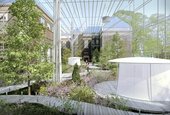
San Francisco Transbay / Salesforce Park
The San Francisco Transbay Center redevelopment project realizes the world’s largest rooftop park in the center of one of the world’s most exciting cities: Salesforce Park. The concept, developed by Except together with Pelli Clarke Pelli Architects, restructures an existing transport hub into a beacon of beauty, biodiversity, and health. The project started in 2007 and the park opened in 2019.
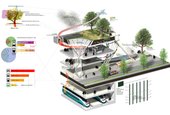
House of Energy
What is an energy neutral home? What are the benefits? The costs? What are the choices? What does it look like? And is the quality of living really better? House of Energy is an extensive book that answers all of these questions for home owners and contractors. It specifically focuses on house renovations, but can be used for new construction as well.
Except and TNO have made an inspiration book to introduce interested house owners and construction professionals to energy neutral building and renovation. A book filled with examples, inspiration, interviews, tips and technical details: a book filled with energy!
Download the book for free on this page, or order it from Bol.com. The book was commissioned by the SEV Energiesprong (‘Energy Leap’) program.
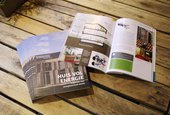
Crystal Forest Office
This exciting office-jungle in a glass cocoon is an energy-neutral plug-in retrofit for empty industrial real-estate. It integrates all facilities and luxuries an exciting co-operative office environment can wish for today.
The Crystal Forest is a modular system that can be built and removed quickly on virtually any location, is entirely self-contained, and offers a feasible business case for a wide variety of real estate challenges, including adaptive re-use of industrial hertiage.
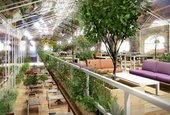
Sustainable Urban Districts - 2015 Global Review - WWF
This project arose from the joint desire of WWF and Lafarge to contribute original research to move the construction sector towards a sustainable future. We examined 11 exemplary urban districts and neighborhoods around the world from inception to inhabited, using a systemic and holistic perspective. We extracted the success and failure factors, and uncovered new strategies that accelerate sustainable development both on a project and building sector level.
The result is available in a comprehensively illustrated book, downloadable from this page, or read it online at ISSUU.
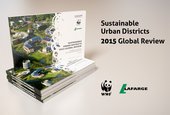
Zevenkamp through our eyes
“Zevenkamp through our eyes: a story of three students and one neighborhood” is an urban transformation project by Except Academy, a learning platform for interns at Except. We developed an inspiration book which tells the story of our journey and experiences while investigating Zevenkamp, the second largest post-war neighborhood in the Netherlands.
The purpose of the book is to inspire and share our vision of Zevenkamp’s future. It has practical examples of opportunities for the neighborhood to become flourishing and resilient with the help of its residents and stakeholders.
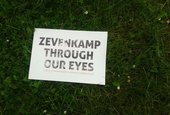
Utrecht Community (UCo)
The Utrecht Community (UCo) is a national center for sustainable entrepreneurship in the city of Utrecht. UCo brings together 180 pioneering sustainable entrepreneurs and SMBs, and facilitates them in an exemplary sustainable and inspiring building. UCo is a place to develop, discover, and accelerate together, 5 minutes biking from central station. Except developed UCo independently, and opened its doors in 2017.
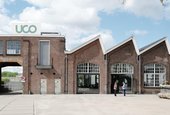
Elst forest villa renovation
For the Beije family we developed a high performance energy and water neutral villa renovation concept. It sits at the edge of the forest in Elst, part of the Veluwe national park area. The 400m2 villa is mostly reconstructed by the hands of the family themselves, utilizing natural and local materials, among which a straw roof. The villa's design makes optimal use of the existing structure and surroundings. It results in a sleek and subtle, comfortable and high-performance modern living experience in a superb setting, and a future-proof long term investment for the family.
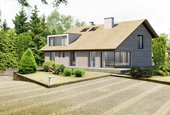
The Future of Sterkenburg
Historic sites struggle to find business models that protect and optimize their cultural heritage in a rapidly changing world. The owners of the medieval castle of Sterkenburg in Driebergen decided to take up this challenge, looking for new ways to reignite its economic and social value. They engaged a multidisciplinary group of sustainability experts from Except Integrated Sustainability, who developed a special program to help historic sites unearth their opportunities. The resulting roadmap delivers concrete, immediate cost savings in the short term, and new ways for the castle to play a role in both today’s, and tomorrow’s society.
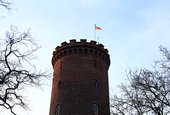
Roadmap to the BGI Manual
Blue Green Infrastructures (BGI) increase the resilience of urban and rural landscapes, integrating their core functions with natural features and processes. Hurdles exist in the process of translating BGI-related knowledge and data from science to practice, and a tool that facilitates this transfer is still missing. We conducted a research in collaboration with a team of partner organizations (JNCC, IFLA Europe, BiodivERsA, and NRW), to pinpoint key preliminary knowledge to design such a tool, and collected our key findings in a report downloadable on this page.

Contact
Tom Bosschaert
Director
 +31 10 7370215
+31 10 7370215

